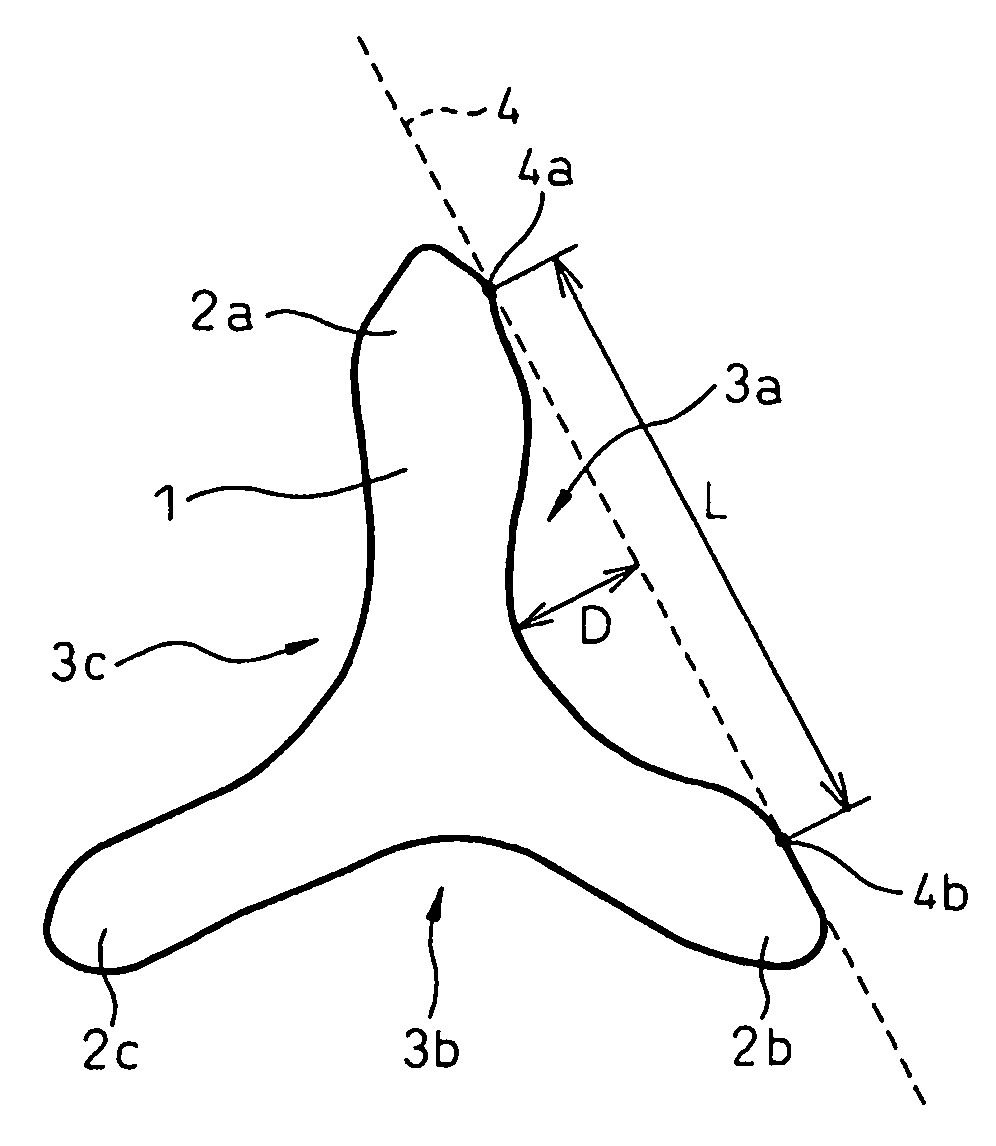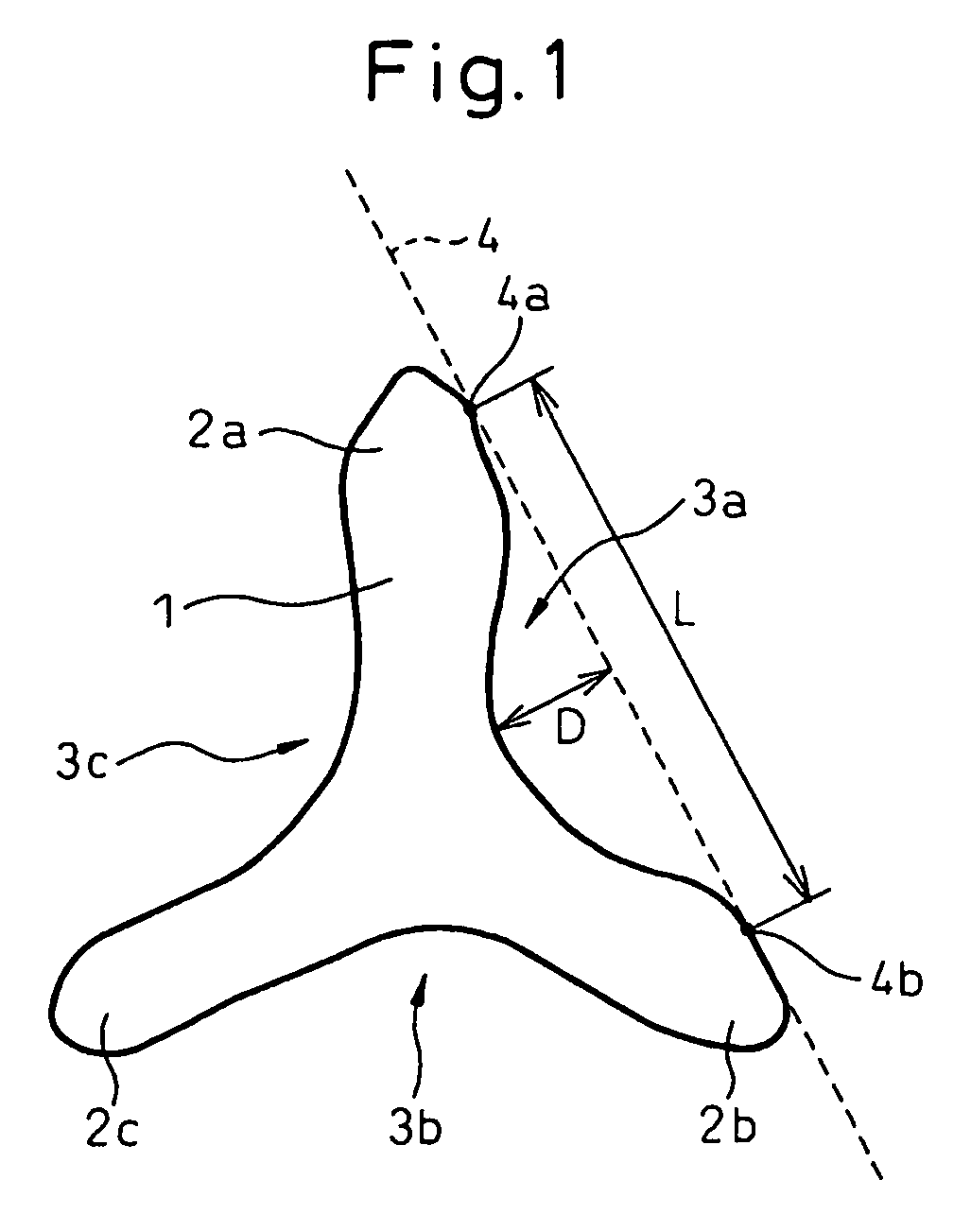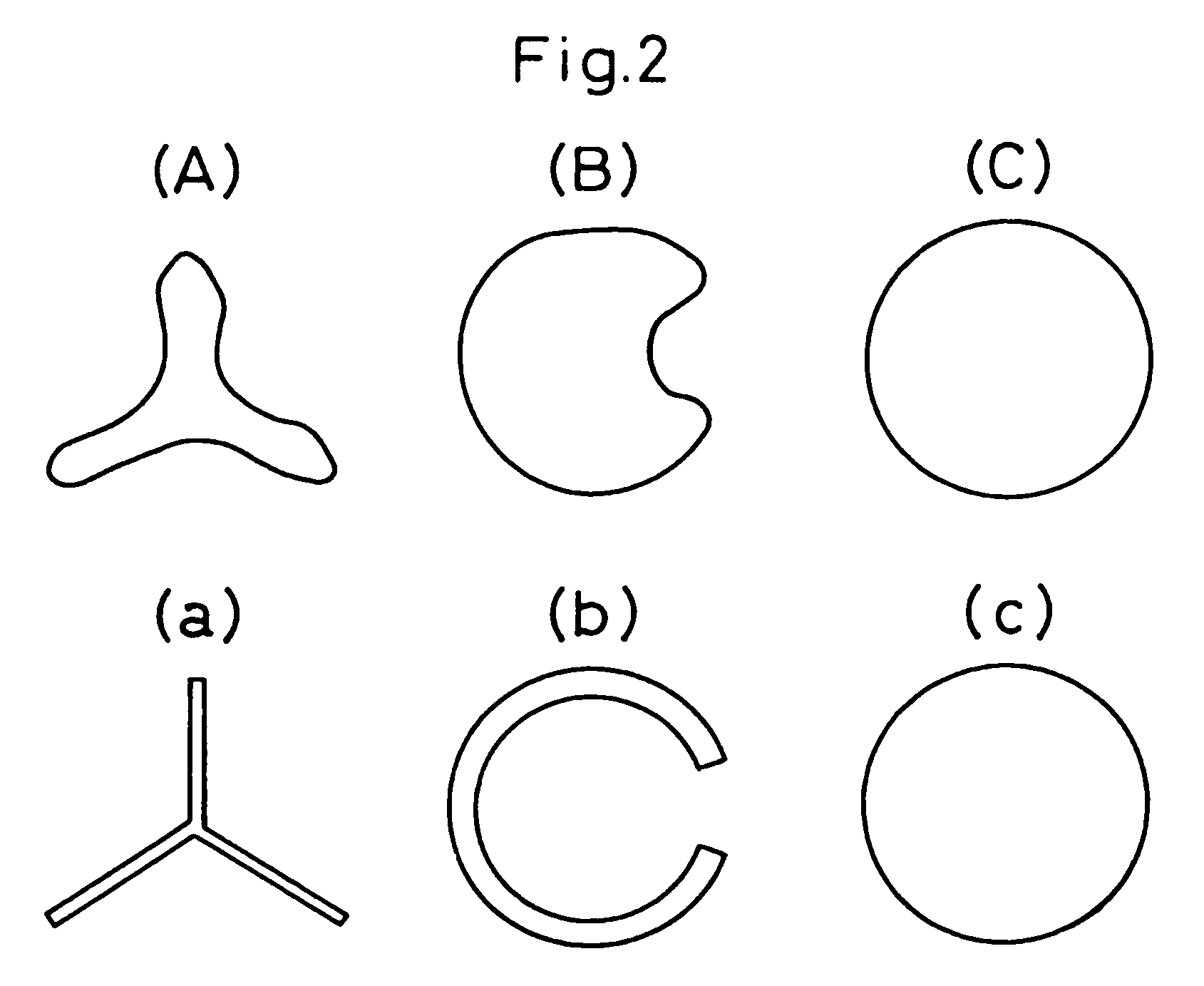Synthetic staple fibers for an air-laid nonwoven fabric
a non-woven fabric and synthetic fiber technology, applied in the direction of yarn, filament/thread forming, transportation and packaging, etc., can solve the problem of unsatisfactory quality of non-woven fabric, and achieve the effect of high friction value, low cost and no defects
- Summary
- Abstract
- Description
- Claims
- Application Information
AI Technical Summary
Benefits of technology
Problems solved by technology
Method used
Image
Examples
example 1
[0082]A high density polyethylene (HDPE) having a MFR of 20 g / 10 min and a Tm of 131° C. and a poly(ethylene terephthalate) (PET) vacuum dried at 120° C. for 16 hours and having an intrinsic viscosity [η] of 0.61 and a Tm of 256° C. were melted separately from each other by separate extruders to prepare a polyethylene melt having a temperature of 250° C. and a polyester melt having a temperature of 280° C. The polyethylene melt was used as a sheath component A and the polyester melt was used as a core component B. The sheath component (A) resin melt streams and the core component B resin melt streams were combined in a combination mass ratio A:B of 50:50 through a melt-spinneret for forming a core-in-sheath type composite yarn having 450 extrusion holes in the form as shown in FIG. 3(d), to form a core-in-sheath type composite resin melt streams, and the resultant core-in-sheath type composite streams were melt-extruded through the spinneret. In this melt-spinning procedure, the spi...
example 4
[0086]Core-in-sheath type composite staple fibers were produced under the same conditions as in Example 1, except that no stuffing crimper was employed not to impart crimps to the staple fibers. Table 1 shows the test results.
examples 5 to 6
[0088]In each of Examples 5 and 6, core-in-sheath type composite staple fibers were produced, in the same manner as in Example 1 except that the number of crimps was changed to 5 crimps / 25 mm in Example 5 and to 40 crimps / 25 mm in Example 6 by controlling the feed rate of the drawn filament yarn to the stuffing crimper and the stuffing pressure to the filament yarn. Table 1 shows the test results.
PUM
| Property | Measurement | Unit |
|---|---|---|
| length | aaaaa | aaaaa |
| length | aaaaa | aaaaa |
| length | aaaaa | aaaaa |
Abstract
Description
Claims
Application Information
 Login to View More
Login to View More - R&D
- Intellectual Property
- Life Sciences
- Materials
- Tech Scout
- Unparalleled Data Quality
- Higher Quality Content
- 60% Fewer Hallucinations
Browse by: Latest US Patents, China's latest patents, Technical Efficacy Thesaurus, Application Domain, Technology Topic, Popular Technical Reports.
© 2025 PatSnap. All rights reserved.Legal|Privacy policy|Modern Slavery Act Transparency Statement|Sitemap|About US| Contact US: help@patsnap.com



